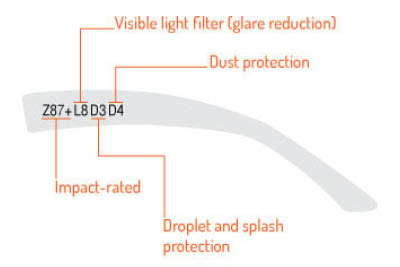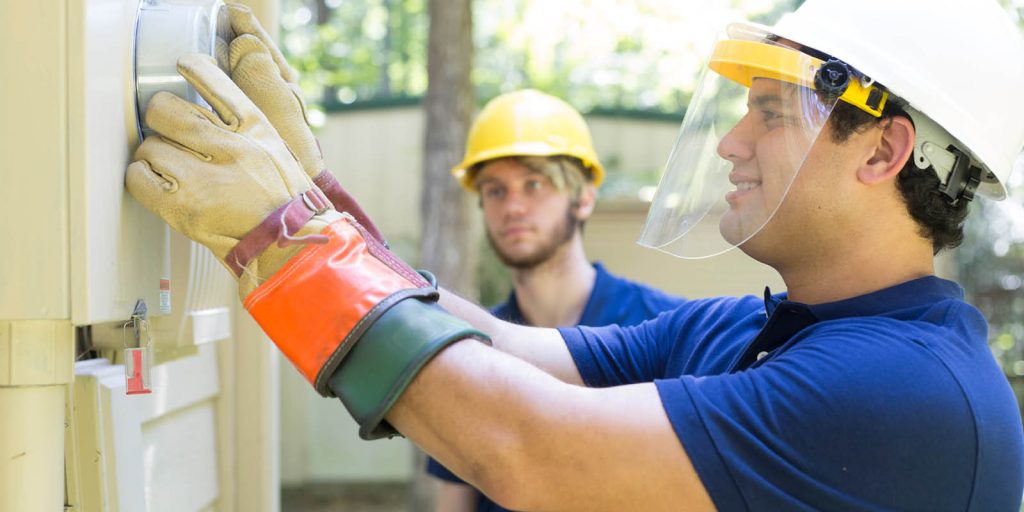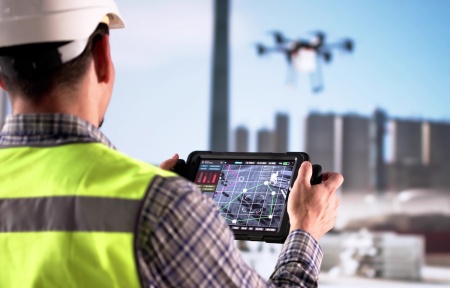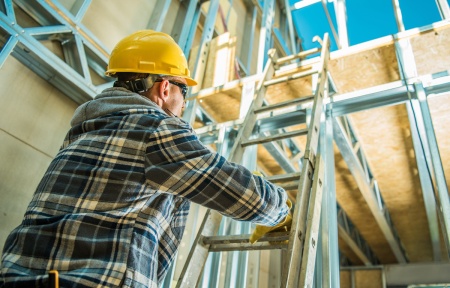In Your Eyes
By Paul Bernier, ASP
Each day, there are approximately 2,000 worker eye injuries in the U.S., and nearly 20,000 per year that necessitate lost time from work. These injuries cost employers and insurance companies millions of dollars per year. In fact, these injuries cost more than $924 million annually in worker’s compensation, and almost $4 million in wage and productivity losses according to the U.S. Bureau of Labor Statistics. Although these losses are expensive, the devastation to the worker can be life-changing. And yet, it is estimated that 90% of these injuries could have been prevented by simply wearing the correct eye protection.
Most work-related eye injuries are caused by flying debris, which puts those working in construction and manufacturing jobs at the highest risk. Welders are particularly at high risk because of the power tools used such as grinders, drills, saws and welding equipment. Also, solvents, lubrications and other caustic substances can cause injuries when entering the eyes.
The different types of eye hazards include:
- Impact of flying particles
- Heat injuries
- Chemical splashes
- Ultraviolet Radiation
- Infrared radiation
Lasers
The impact hazards include flying objects such as chips, fragments, particles, dust, sand, etc. These hazards are created by job tasks such as grinding, chipping, machining, sawing, drilling, hammering and more. These small objects can cause serious eye injuries and even blindness. Impact injuries are the most common, accounting for 70% of all work-related eye injuries.
Heat related eye injuries occur when workers are exposed to high temperatures, sparks, and splashes from molten metal.
Eye related injuries caused by chemicals occur when a liquid chemical, mist, or vapor are splashed into the eye. Many of these injuries are serious and irreversible.
UV and IR radiation hazards are everywhere in our industry from plasma and welding arcs to even bright sunlight. Any source of bright light can cause damage in a short period of time.
Lasers are becoming increasingly prevalent and if proper eye protection is not used, the damage can be instantaneous and permanent. Welding lasers use dangerous infrared laser light that poses an elevated hazard because it cannot be seen, thus not triggering the eyes to blink.
ANSI (American National Standards Institute) has set a standard, Z87.1, which addresses proper testing and markings to be used to protect worker eyes. Z87.1 is a certification and rating system developed to ensure manufacturers of safety eyewear follow proper testing procedures and properly mark the products based on the hazards that are encountered by workers.
IMPACT TESTING- Z87
For safety eyewear to meet the Z87.1 standard, it must pass the drop ball impact test. The eyewear passes the test if the lens and frame stay intact when struck with a 1” diameter steel ball, weighing 2.4oz, dropped from a height of 50.”
Also, you may notice some glasses will be labeled with a “+” sign at the end of the Z87 marking. The “+” indicates that eyewear has passed a high velocity impact test. The high velocity impact test uses a ¼” size steel ball and is shot at many different impact points on the eyewear at 102mph for glasses and 170mph for goggles. So, a Z87+ label means the eyewear passed a more rigorous impact test than the basic impact tested for the Z87 alone.
Safety eyewear is also labeled for dust and splash protection, this is indicated by the letter “D” followed with a number to signify the protection level.
- D3 is eye protection that protects again droplets and splashes
- D4 provides protection against dust
- D5 provides protection against fine dust particles
It is important to know what these letters, numbers, and symbols mean to be able to provide proper protection from whatever hazards that may be present. Here is a quick reference to help understand what all the markings refer to:
- Z87 passed regular impact test
- Z87+ passed high impact test
- D3 liquid droplets protection
- D4 dust protection
- D5 fine dust particle protection
- R infrared light protection
- U ultraviolet protection, followed by a number to show how much protection
- L has a light filter, followed by a number to show levels of protection
- W indicated that it is safe to use while welding
- Z87-2 indicates prescription safety glasses
- N has anti-fog coating
- K scratch resistant
Anti fog levels are very important, as we learned during COVID, when workers wearing safety glasses and masks at the same time had fogging issues. When a worker’s glasses fog up, they can’t see very well, which creates an unsafe environment. If they take the eyewear off to clean them, their eyes are no longer protected. It is important to spend a little more to get proper safety glasses that won’t fog up. There are two types of anti-fog coating, hydrophobic and hydrophilic.

Hydrophobic means “water fearing.” This type of coating repels water and causes it to run off the glasses. Hydrophilic means “water loving.” This type of coating absorbs the water. Hydrophobic coatings tend to wipe off easier because they are soap based and when wiped with soap, the coating can be removed easier.
It is not only important to wear the appropriate safety glasses and shields, but also to understand what the lettering and numbers mean. There are many options, and it can be confusing, but it is critical to protect workers’ eyes from the hazards that might be present. Look for the Z87 markings first, then follow it with codes and letters that pertain to the risks. Almost all our customers need some sort of eye protection besides welding shields, and it is important to provide them with the proper products and be able to explain the differences.







